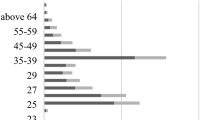Abstract
The power of the image is to touch the deepest feelings of the audience (indignation, compassion, sublimation, fear, hatred, astonishment, etc.). Internet users, who are often drowned in a permanent flow of information, are not led to analyze an image. They are simply touched, affected by the content. This appeal to emotion is a favorable ground for the deployment of post-truth. Post-truth is a situation where the reality of facts influences public opinion less than the appeal to emotions and personal beliefs. It is the emotion that prevails, the truth has become secondary. We decided to undertake a reception study with students of the Information-Communication OTC, aiming to understand their (in-)capacity to discern infox in a digital context, their verbalization of personal emotions and the forms of self-involvement in the discourse. After having collected over two consecutive years the reactions of about 80 students to several kinds of pictures in context and out of context, we will show how NooJ allows us to bring out the personal involvement in discourse, and the differences in student’s permeability once they have been a bit sensitized to this issue. We will use lexicon analysis, concordances analysis, but also semantic information analysis (on expressed feelings for example). We have been interested in ethos in discourse, and we will see that it is often associated with emotional reactions, making a clear link with the emotional web that has been strongly emerging in recent years.
Access this chapter
Tax calculation will be finalised at checkout
Purchases are for personal use only
Similar content being viewed by others
Notes
- 1.
- 2.
According to a survey conducted by BVA-La villa numeris in 2018 by the Ministry of Europe and Foreign Affairs, more than half of French people who share information have already done so when they knew it was unreliable: 34% wanted to arouse the interest of their friends and 31% admit that they had absolutely not checked the source. Access: https://www.lavillanumeris.com/180404-fake_news-analyse.
- 3.
Post-truth is a situation of reception where the reality of facts influences public opinion less than the appeal to emotions and personal beliefs.
- 4.
Respectively, there are 31 responses for Digital Information (IN) students, 50 for Organizational Communication (COM) students and 73 for Advertising (PUB) students.
- 5.
This is a special case because it comes from a work of the Israeli artist Shahak Shapira, who in his project “Yolocaust” questions our culture of commemoration by bringing together on his site current selfies in the camps with old photographs that show the horror that inhabited these places.
- 6.
The analyses and the experiment that we have carried out here show results with these students and under these circumstances, but we can add that the experiment was carried out the previous year, under the same conditions, with the same groups of students, we obtained approximately the same results for self-expression.
References
Allard, L., Vandenberghe, F.: Express Yourself! Les pages perso entre légitimation techno-politique de l’individualisme expressif et authenticité réflexive peer-to-peer. In : Réseaux, vol. 117, pp. 191–219 (2003)
Amossy, R.: La présentation de soi. Ethos et identité verbale. Presses universitaires de France, Paris (2010)
Bigey, M.: Twitter et l’inscription de soi dans le discours. L’ethos pris au piège (ou pas) de la frontière sphère privée/sphère publique. In: Les Cahiers du numérique, vol. 14, pp. 55–75 (2018)
Bigey, M., Simon, J.: Désinfoxiquer les images sur les réseaux socionumériques. Vers une démarche empirique d’éducation à l’image. In: Bonfils, Ph., Dumas, Ph., Remond, É., Stassin, B., Vovou, I. (dirs) L’éducation aux médias tout au long de la vie: des nouveaux enjeux pédagogiques à l’accompagnement du citoyen, Conférence TICEMED 12, Athènes, 7–9 Avril 2020, pp. 198–206 (2021)
Bigot, L.: Le fact checking en France en une chronologie. In: La Revue des Médias (2019). https://larevuedesmedias.ina.fr/le-fact-checking-en-france-en-une-chronologie
Charaudeau, P.: La Manipulation de la vérité. Du triomphe de la négation aux brouillages de la post-vérité. Lambert-Lucas, Limoges (2020)
Gervereau, L.: Un siècle de manipulations par l’image. Somogy-BDIC, Paris (2000)
Gunthert, A.: L’image partagée: la photographie numérique. Textuel, Paris (2015)
Jehel, S.: L’image dans l’éducation aux médias et à l’information. In: Ihadjadene, M., Saemmer, A., Baltz, Cl. (dirs) Culture informationnelle. Vers une Propédeutique du numérique, Hermann, Paris, pp. 133–155 (2015)
Le Bras, S.: Les fausses nouvelles: une histoire vieille de 2 500 ans. In: The Conversation France (2018). http://theconversation.com/les-fausses-nouvelles-une-histoire-vieille-de-2-500-ans-101715
Meizoz, J.: La Fabrique des singularités. In: Postures littéraires II. Slatkine, Genève (2011)
Mercier, A. (dir).: Fake news et post-vérité: tous une part de responsabilité! In: Fake news et post-vérité, E-book The Conversation France (2018). https://theconversation.com/fake-news-et-post-verite-20-textes-pour-comprendre-et-combattre-la-menace-97807
Sassoon, V.: Éduquer les jeunes aux images, un enjeu de citoyenneté. In: La Revue des Médias (2018). https://larevuedesmedias.ina.fr/eduquer-les-jeunes-aux-images-unenjeu-de-citoyennete
Simon, J.: L’infox par l’image sur les réseaux socionumériques. Détournements, Circulation et Mises en récit. In: Interstudia, vol. 25, pp. 41–52 (2019)
Silberztein, M.: La formalisation des langues: l’approche de NooJ. ISTE, Londres (2015)
Author information
Authors and Affiliations
Corresponding author
Editor information
Editors and Affiliations
Rights and permissions
Copyright information
© 2021 Springer Nature Switzerland AG
About this paper
Cite this paper
Bigey, M., Simon, J. (2021). Sensitivity to Fake News: Reception Analysis with NooJ. In: Bigey, M., Richeton, A., Silberztein, M., Thomas, I. (eds) Formalizing Natural Languages: Applications to Natural Language Processing and Digital Humanities. NooJ 2021. Communications in Computer and Information Science, vol 1520. Springer, Cham. https://doi.org/10.1007/978-3-030-92861-2_8
Download citation
DOI: https://doi.org/10.1007/978-3-030-92861-2_8
Published:
Publisher Name: Springer, Cham
Print ISBN: 978-3-030-92860-5
Online ISBN: 978-3-030-92861-2
eBook Packages: Computer ScienceComputer Science (R0)




